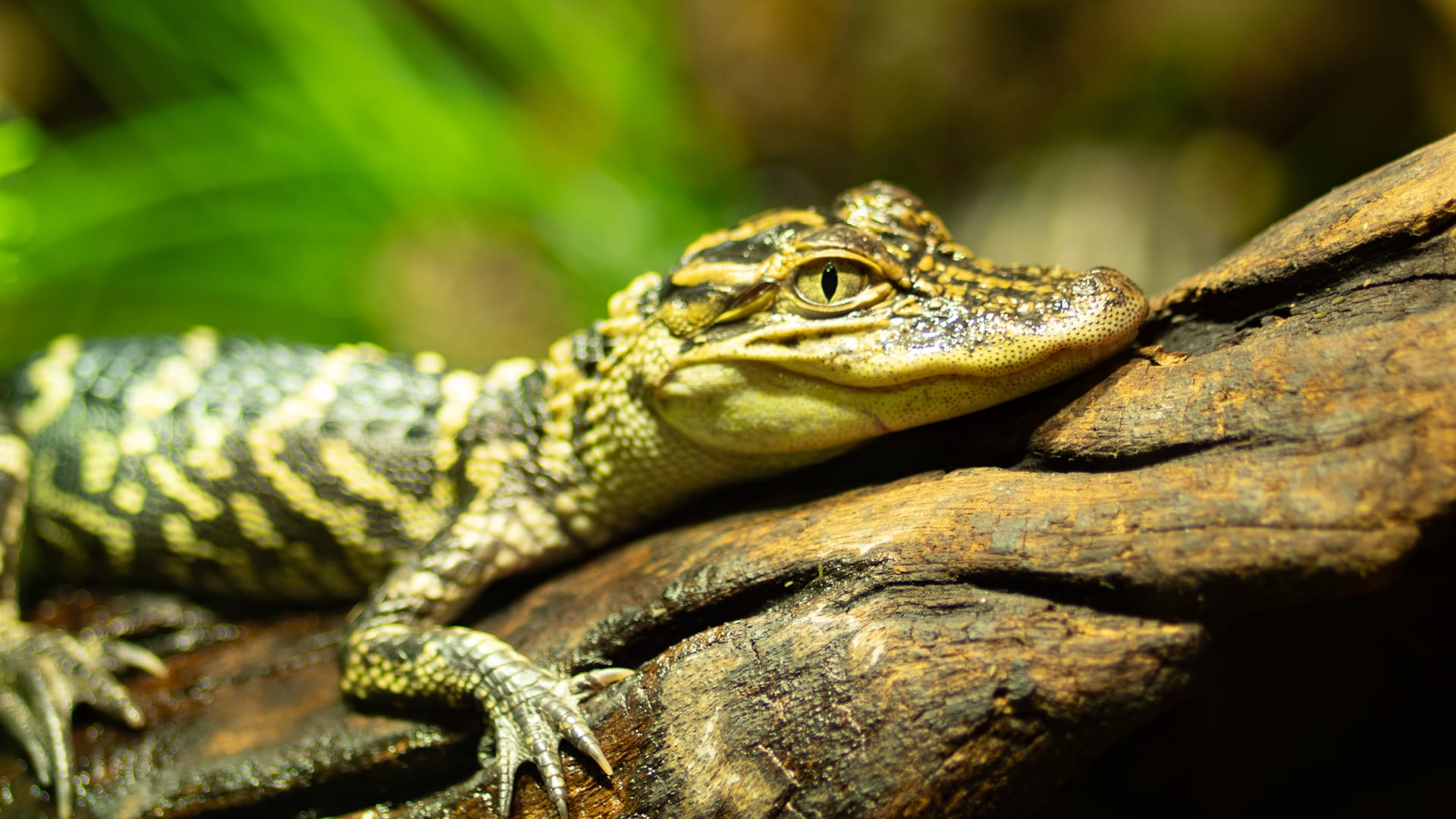
How is your life like an alligator's life?
Scroll for prep

Please wait…
This video is having trouble loading. You may have lost your Internet connection.
Step 1: Click to Reload this page
Step 2: Click to
Try our other video player
Step 3: contact support if trouble persists.
Or,
dismiss this message.
DISCUSS:
What's your favorite thing you can do now that you couldn't do when you were a baby?

Please wait…
This video is having trouble loading. You may have lost your Internet connection.
Step 1: Click to Reload this page
Step 2: Click to
Try our other video player
Step 3: contact support if trouble persists.
Or,
dismiss this message.
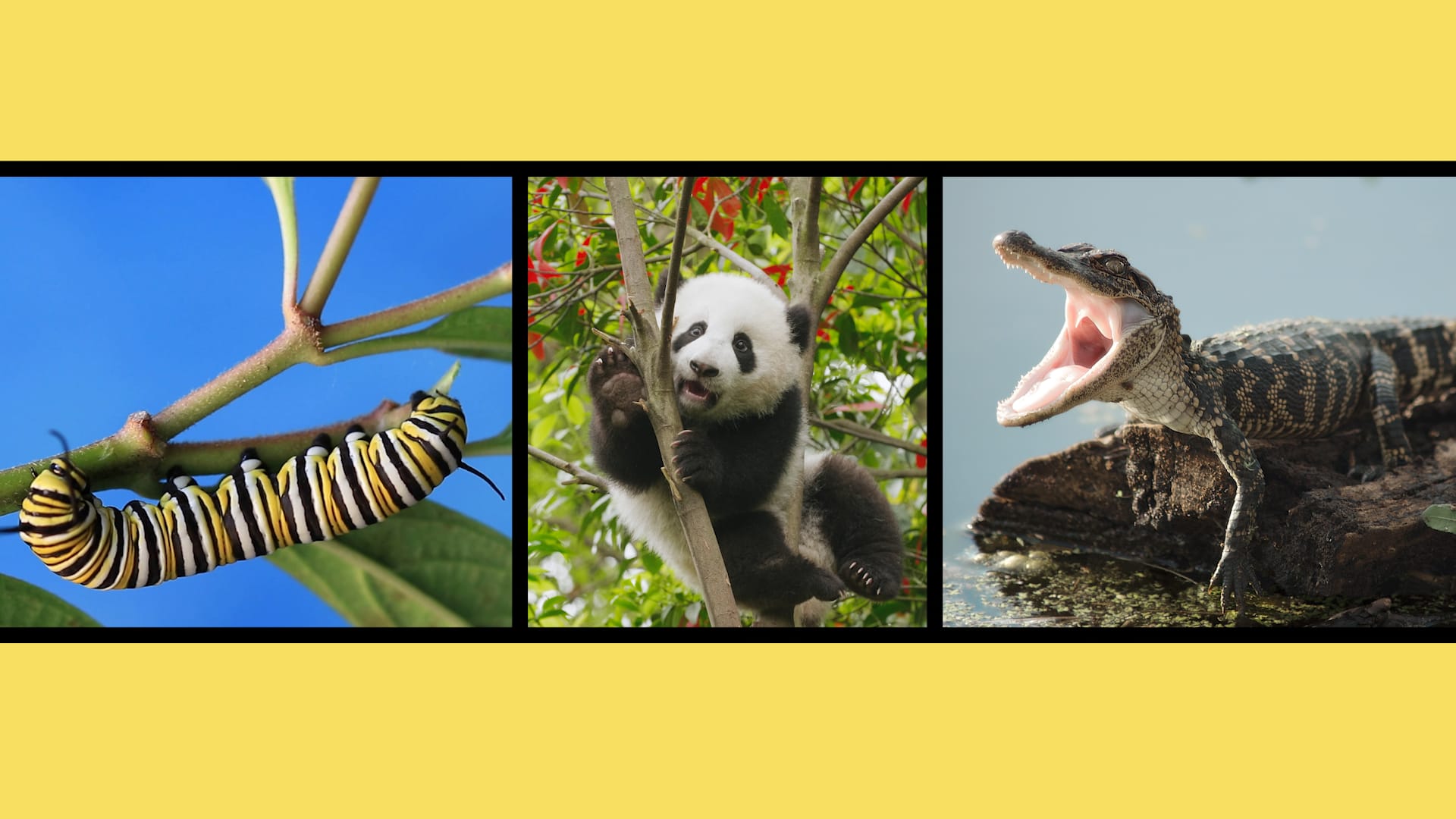
DISCUSS:
Which birthday buddy do you think will change the MOST
as they grow into an adult?
Which birthday buddy do you think will change the MOST
as they grow into an adult?

Please wait…
This video is having trouble loading. You may have lost your Internet connection.
Step 1: Click to Reload this page
Step 2: Click to
Try our other video player
Step 3: contact support if trouble persists.
Or,
dismiss this message.
DISCUSS:
How could you draw a picture that shows how you’ve changed since you were born?

Please wait…
This video is having trouble loading. You may have lost your Internet connection.
Step 1: Click to Reload this page
Step 2: Click to
Try our other video player
Step 3: contact support if trouble persists.
Or,
dismiss this message.

Please wait…
This video is having trouble loading. You may have lost your Internet connection.
Step 1: Click to Reload this page
Step 2: Click to
Try our other video player
Step 3: contact support if trouble persists.
Or,
dismiss this message.
Step
01/22
01/22
Find a partner.

Please wait…
This video is having trouble loading. You may have lost your Internet connection.
Step 1: Click to Reload this page
Step 2: Click to
Try our other video player
Step 3: contact support if trouble persists.
Or,
dismiss this message.
Step
02/22
02/22
The first two birthday buddies you’ll look at are a squirrel and an
ostrich. There are many ways a squirrel is very different from an
ostrich. Discuss with your partner:
ostrich. There are many ways a squirrel is very different from an
ostrich. Discuss with your partner:

Please wait…
This video is having trouble loading. You may have lost your Internet connection.
Step 1: Click to Reload this page
Step 2: Click to
Try our other video player
Step 3: contact support if trouble persists.
Or,
dismiss this message.
Step
03/22
03/22
You probably came up with many ways these animals are different.
Here’s a tougher question. There are ways that a squirrel and an
ostrich are the same. Discuss with your partner:
Here’s a tougher question. There are ways that a squirrel and an
ostrich are the same. Discuss with your partner:

Please wait…
This video is having trouble loading. You may have lost your Internet connection.
Step 1: Click to Reload this page
Step 2: Click to
Try our other video player
Step 3: contact support if trouble persists.
Or,
dismiss this message.
Step
04/22
04/22
Get your supplies.

Please wait…
This video is having trouble loading. You may have lost your Internet connection.
Step 1: Click to Reload this page
Step 2: Click to
Try our other video player
Step 3: contact support if trouble persists.
Or,
dismiss this message.
Step
05/22
05/22
Have one person cut the Animal Cards sheet in half, like this.
Then each of you take half and cut along these dark lines.
You’ll end up with four animal cards.
Then each of you take half and cut along these dark lines.
You’ll end up with four animal cards.

Please wait…
This video is having trouble loading. You may have lost your Internet connection.
Step 1: Click to Reload this page
Step 2: Click to
Try our other video player
Step 3: contact support if trouble persists.
Or,
dismiss this message.
Step
06/22
06/22
Find the cards for ostrich and squirrel. You will add one of these
animals to your timeline. Your partner will add the other to their
timeline. Decide who will add ostrich and who will add squirrel.
animals to your timeline. Your partner will add the other to their
timeline. Decide who will add ostrich and who will add squirrel.

Please wait…
This video is having trouble loading. You may have lost your Internet connection.
Step 1: Click to Reload this page
Step 2: Click to
Try our other video player
Step 3: contact support if trouble persists.
Or,
dismiss this message.
Step
07/22
07/22
Both: Cut along all the dotted lines on your animal card.
You’ll cut out your animal’s name and some important events in your
animal’s life.
You’ll cut out your animal’s name and some important events in your
animal’s life.

Please wait…
This video is having trouble loading. You may have lost your Internet connection.
Step 1: Click to Reload this page
Step 2: Click to
Try our other video player
Step 3: contact support if trouble persists.
Or,
dismiss this message.
Step
08/22
08/22
Get your Birthday Buddies Timeline. Glue the name of your animal
where it says “Birthday Buddy #1.” To keep the glue off your table,
use a scrap piece of paper, like this.
where it says “Birthday Buddy #1.” To keep the glue off your table,
use a scrap piece of paper, like this.

Please wait…
This video is having trouble loading. You may have lost your Internet connection.
Step 1: Click to Reload this page
Step 2: Click to
Try our other video player
Step 3: contact support if trouble persists.
Or,
dismiss this message.
Step
09/22
09/22
Look at the boxes from your animal card. Find the one marked with a
0. That’s when your animal was born. Match up the 0 on the box and
the 0 on the timeline. Glue the box in place, like this.
0. That’s when your animal was born. Match up the 0 on the box and
the 0 on the timeline. Glue the box in place, like this.

Please wait…
This video is having trouble loading. You may have lost your Internet connection.
Step 1: Click to Reload this page
Step 2: Click to
Try our other video player
Step 3: contact support if trouble persists.
Or,
dismiss this message.
Step
10/22
10/22
On your timeline, 1 marks your animal’s first birthday, 2 marks their
second, and so on. Match numbers on the other boxes from your
animal card with numbers on the timeline. Glue the boxes in place.
second, and so on. Match numbers on the other boxes from your
animal card with numbers on the timeline. Glue the boxes in place.

Please wait…
This video is having trouble loading. You may have lost your Internet connection.
Step 1: Click to Reload this page
Step 2: Click to
Try our other video player
Step 3: contact support if trouble persists.
Or,
dismiss this message.
Step
11/22
11/22
The timeline shows ten birthdays. Squirrels live for about ten years,
so the squirrel’s last birthday fits on the timeline. But ostriches can
live for 70 years! Discuss with your partner:
so the squirrel’s last birthday fits on the timeline. But ostriches can
live for 70 years! Discuss with your partner:

Please wait…
This video is having trouble loading. You may have lost your Internet connection.
Step 1: Click to Reload this page
Step 2: Click to
Try our other video player
Step 3: contact support if trouble persists.
Or,
dismiss this message.
Step
12/22
12/22
You’d have to make the timeline 7 times longer—like this! That’s a lot
of paper. So we suggest you just glue the ostrich’s arrow down, like
this. It points to where 70 would be if we made the timeline longer.
of paper. So we suggest you just glue the ostrich’s arrow down, like
this. It points to where 70 would be if we made the timeline longer.

Please wait…
This video is having trouble loading. You may have lost your Internet connection.
Step 1: Click to Reload this page
Step 2: Click to
Try our other video player
Step 3: contact support if trouble persists.
Or,
dismiss this message.
Step
13/22
13/22
Now you can see some important events in your animal’s life. Taking
turns, tell the story of your animal’s life to your partner. Start with
what happens at 0, then move from one event to the next.
turns, tell the story of your animal’s life to your partner. Start with
what happens at 0, then move from one event to the next.

Please wait…
This video is having trouble loading. You may have lost your Internet connection.
Step 1: Click to Reload this page
Step 2: Click to
Try our other video player
Step 3: contact support if trouble persists.
Or,
dismiss this message.
Step
14/22
14/22
Now you’ve told your animal’s life story and listened to the life story
of your partner’s animal. Let’s think about what’s different in the life
stories of these two animals. Discuss with your partner:
of your partner’s animal. Let’s think about what’s different in the life
stories of these two animals. Discuss with your partner:

Please wait…
This video is having trouble loading. You may have lost your Internet connection.
Step 1: Click to Reload this page
Step 2: Click to
Try our other video player
Step 3: contact support if trouble persists.
Or,
dismiss this message.
Step
15/22
15/22
Here are some of the things we noticed. Ostrich babies hatch from
eggs and squirrels don’t. Ostriches take much longer to grow up and
have babies. And ostriches live a lot longer than squirrels!
eggs and squirrels don’t. Ostriches take much longer to grow up and
have babies. And ostriches live a lot longer than squirrels!

Please wait…
This video is having trouble loading. You may have lost your Internet connection.
Step 1: Click to Reload this page
Step 2: Click to
Try our other video player
Step 3: contact support if trouble persists.
Or,
dismiss this message.
Step
16/22
16/22
Now let’s look for ways that the life stories of the ostrich and the
squirrel are the same. Look at the events in the lives of these two
animals. Discuss with your partner:
squirrel are the same. Look at the events in the lives of these two
animals. Discuss with your partner:

Please wait…
This video is having trouble loading. You may have lost your Internet connection.
Step 1: Click to Reload this page
Step 2: Click to
Try our other video player
Step 3: contact support if trouble persists.
Or,
dismiss this message.
Step
17/22
17/22
Both animals are born. Both animals get bigger and bigger as they
grow from babies to adults. Both animals have their own babies when
they grow up. And both eventually reach their last birthday.
grow from babies to adults. Both animals have their own babies when
they grow up. And both eventually reach their last birthday.

Please wait…
This video is having trouble loading. You may have lost your Internet connection.
Step 1: Click to Reload this page
Step 2: Click to
Try our other video player
Step 3: contact support if trouble persists.
Or,
dismiss this message.
Step
18/22
18/22
Get your other animal cards. Decide who will add the bullfrog to their
timeline and who will add the Hercules beetle. I’ll set a timer to give
you 30 seconds to decide.
timeline and who will add the Hercules beetle. I’ll set a timer to give
you 30 seconds to decide.

Please wait…
This video is having trouble loading. You may have lost your Internet connection.
Step 1: Click to Reload this page
Step 2: Click to
Try our other video player
Step 3: contact support if trouble persists.
Or,
dismiss this message.
Step
19/22
19/22
Cut along all the dotted lines on your animal card.
Glue the name of your animal where it says “Birthday Buddy #2.”
Glue the name of your animal where it says “Birthday Buddy #2.”

Please wait…
This video is having trouble loading. You may have lost your Internet connection.
Step 1: Click to Reload this page
Step 2: Click to
Try our other video player
Step 3: contact support if trouble persists.
Or,
dismiss this message.
Step
20/22
20/22
Look at the boxes from the animal card for Birthday Buddy #2.
Match numbers on the boxes with numbers on the timeline.
Glue the boxes in place, like this.
Match numbers on the boxes with numbers on the timeline.
Glue the boxes in place, like this.

Please wait…
This video is having trouble loading. You may have lost your Internet connection.
Step 1: Click to Reload this page
Step 2: Click to
Try our other video player
Step 3: contact support if trouble persists.
Or,
dismiss this message.
Step
21/22
21/22
Take turns telling the life stories of the animals you and your partner
added—the bullfrog and the Hercules beetle. Start with what
happens at 0, then move from one event to the next.
added—the bullfrog and the Hercules beetle. Start with what
happens at 0, then move from one event to the next.

Please wait…
This video is having trouble loading. You may have lost your Internet connection.
Step 1: Click to Reload this page
Step 2: Click to
Try our other video player
Step 3: contact support if trouble persists.
Or,
dismiss this message.
Step
22/22
22/22
You can probably see lots of differences in the life stories of the four
animals. But instead of looking for differences, look for events that
are the same in the life stories of all four animals. Discuss:
animals. But instead of looking for differences, look for events that
are the same in the life stories of all four animals. Discuss:

Please wait…
This video is having trouble loading. You may have lost your Internet connection.
Step 1: Click to Reload this page
Step 2: Click to
Try our other video player
Step 3: contact support if trouble persists.
Or,
dismiss this message.
DISCUSS:
If all animals eventually die, will animals exist in the future?
How do you know?

Please wait…
This video is having trouble loading. You may have lost your Internet connection.
Step 1: Click to Reload this page
Step 2: Click to
Try our other video player
Step 3: contact support if trouble persists.
Or,
dismiss this message.
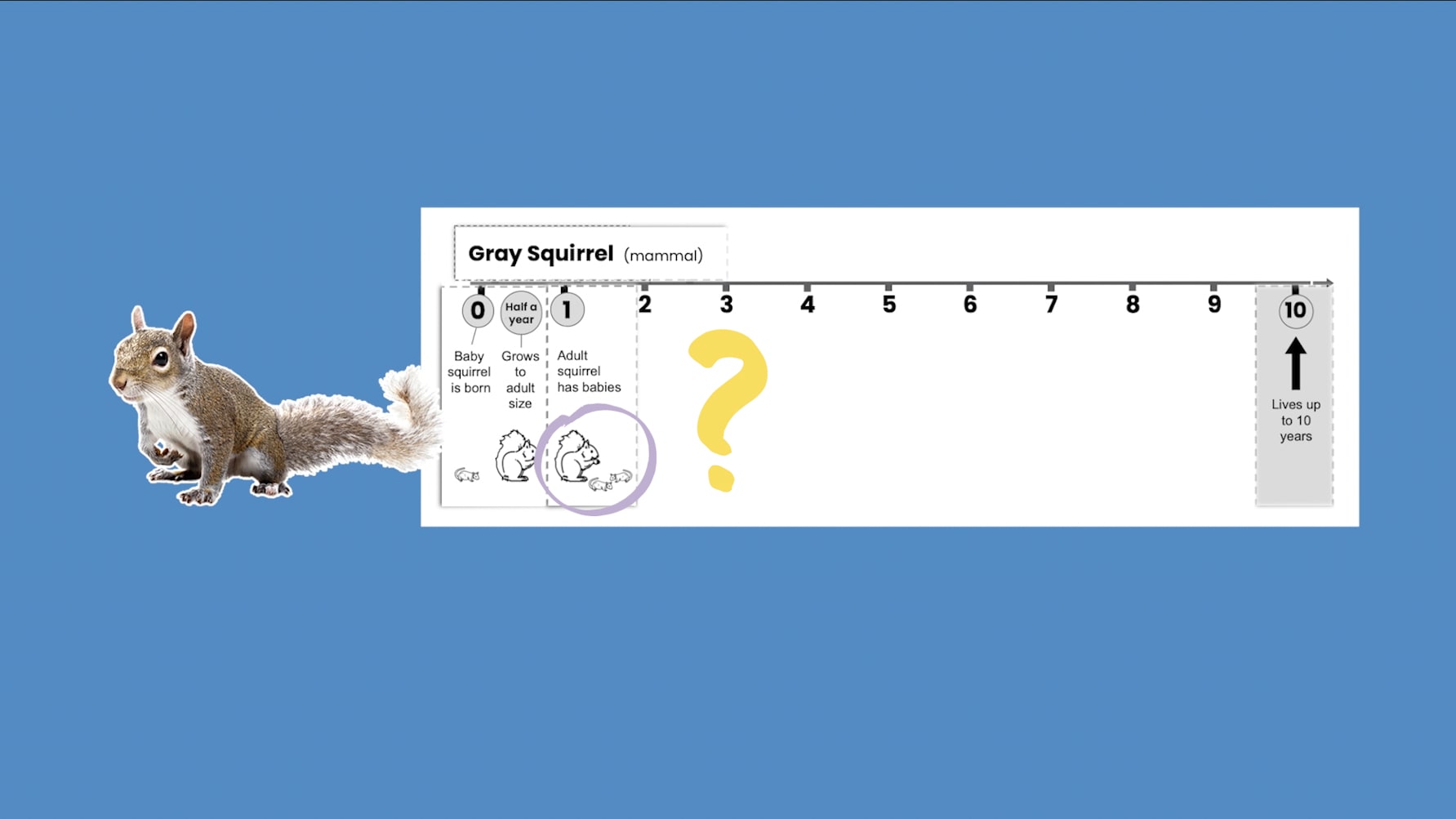
DISCUSS: How could you add to your timeline to show what happens to your birthday buddies’ babies after they are born?

Please wait…
This video is having trouble loading. You may have lost your Internet connection.
Step 1: Click to Reload this page
Step 2: Click to
Try our other video player
Step 3: contact support if trouble persists.
Or,
dismiss this message.

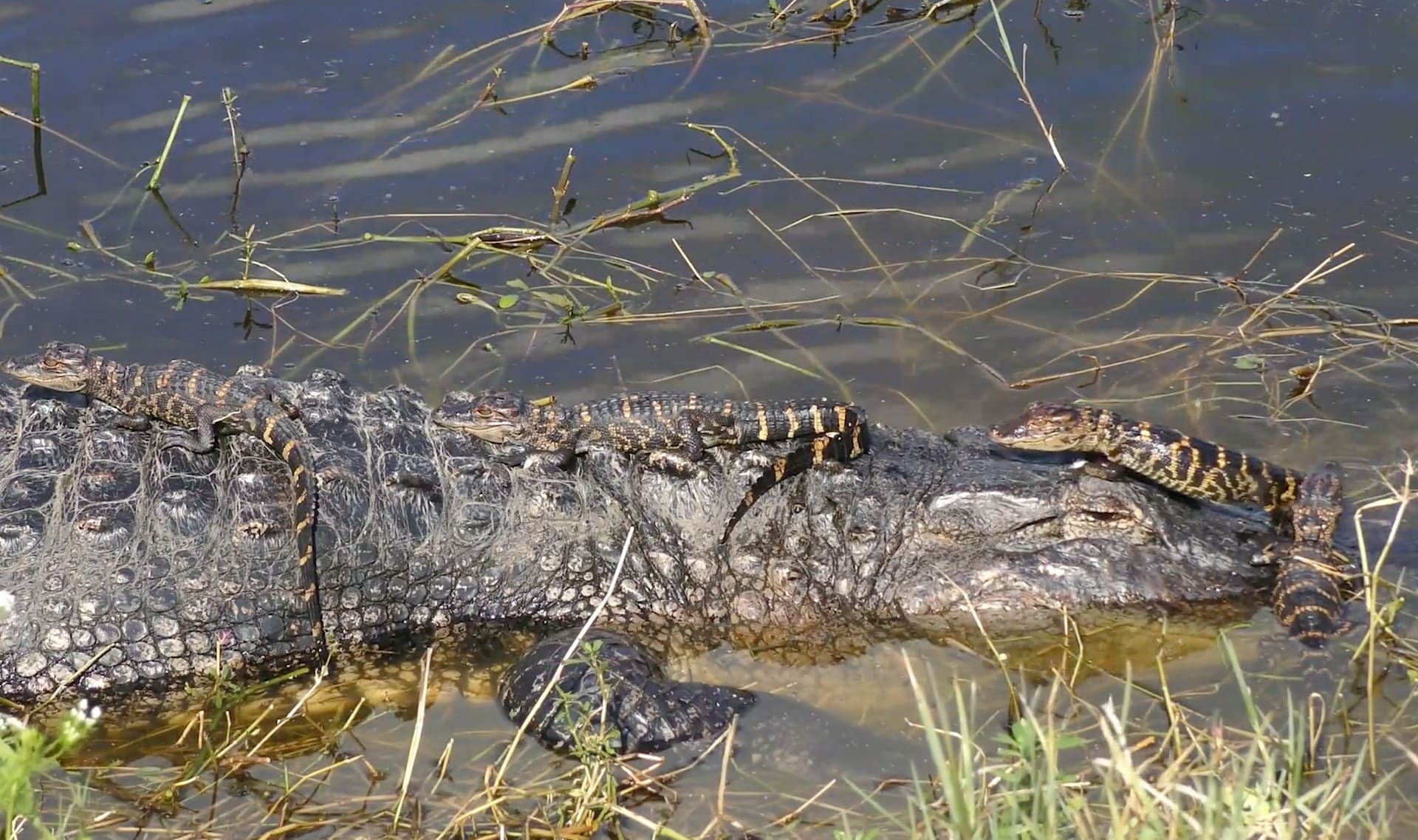
offspring
1 of 13
babies
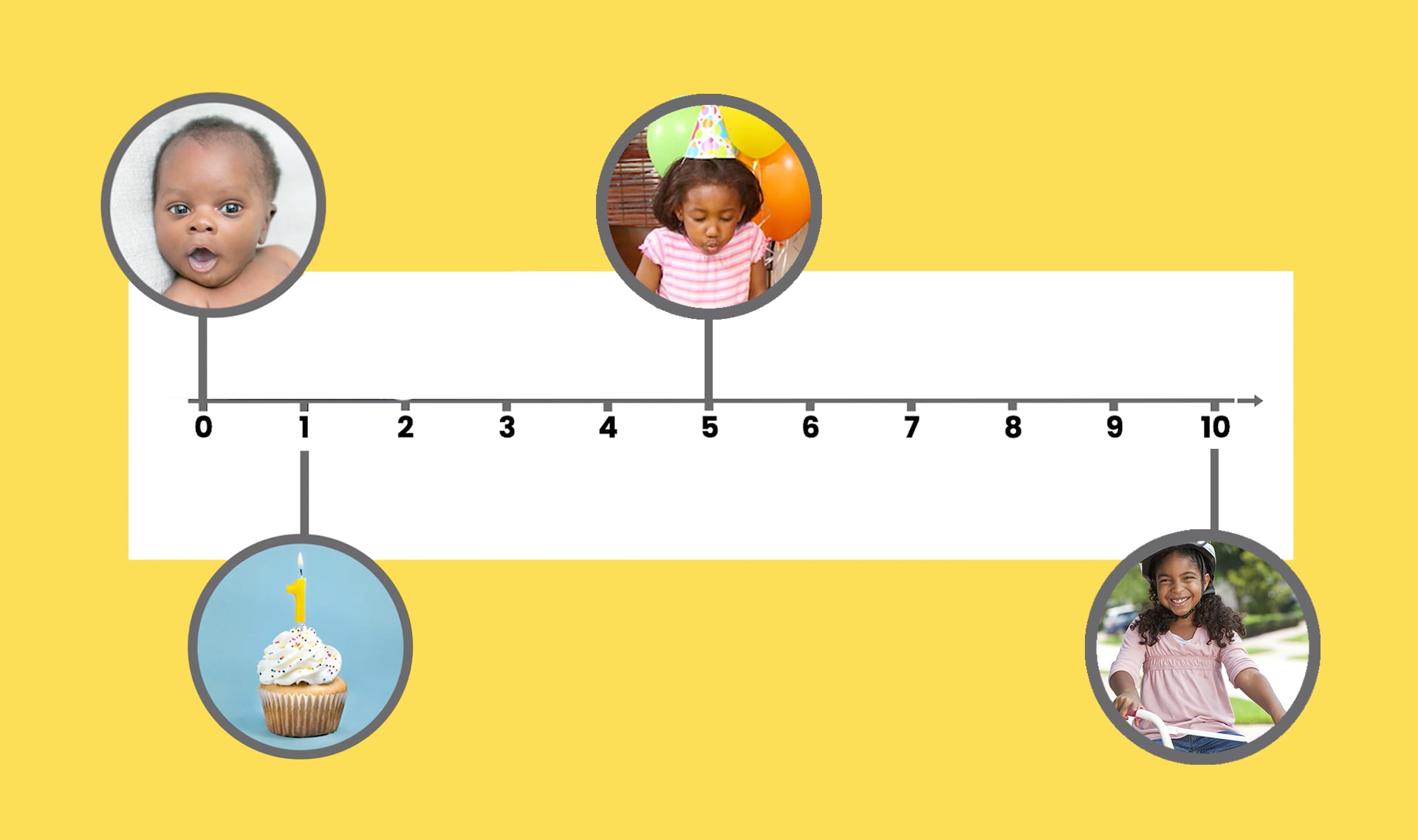
timeline
2 of 13
a picture that shows the passing of time as a line, often with events labeled along the line in the order they happened
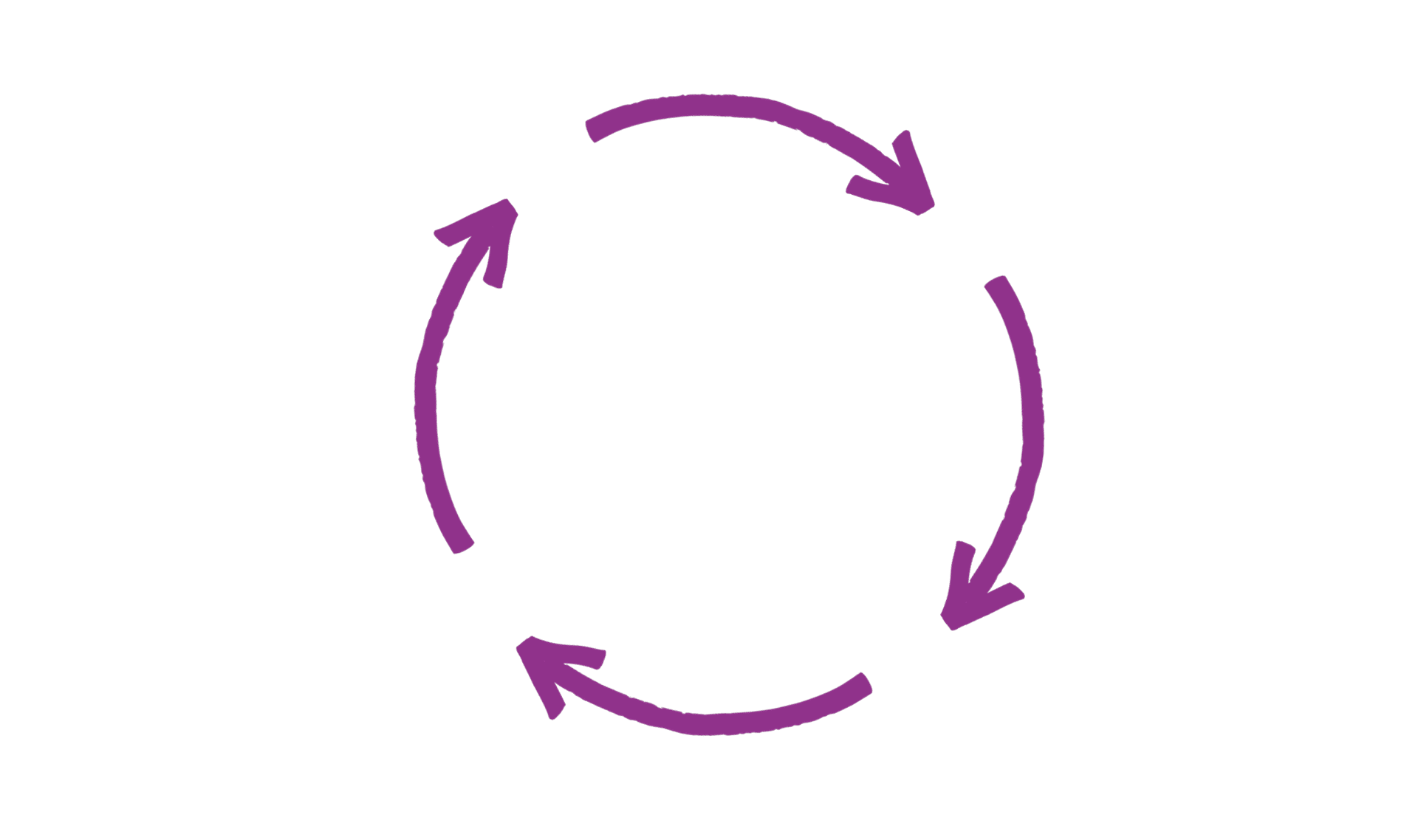
cycle
3 of 13
a set of events that repeats in the same order over and over

pattern
4 of 13
something that can be observed again and again and again in a way that can be predicted

Please wait…
This video is having trouble loading. You may have lost your Internet connection.
Step 1: Click to Reload this page
Step 2: Click to
Try our other video player
Step 3: contact support if trouble persists.
Or,
dismiss this message.
life stage
5 of 13
one of the steps of the life cycle
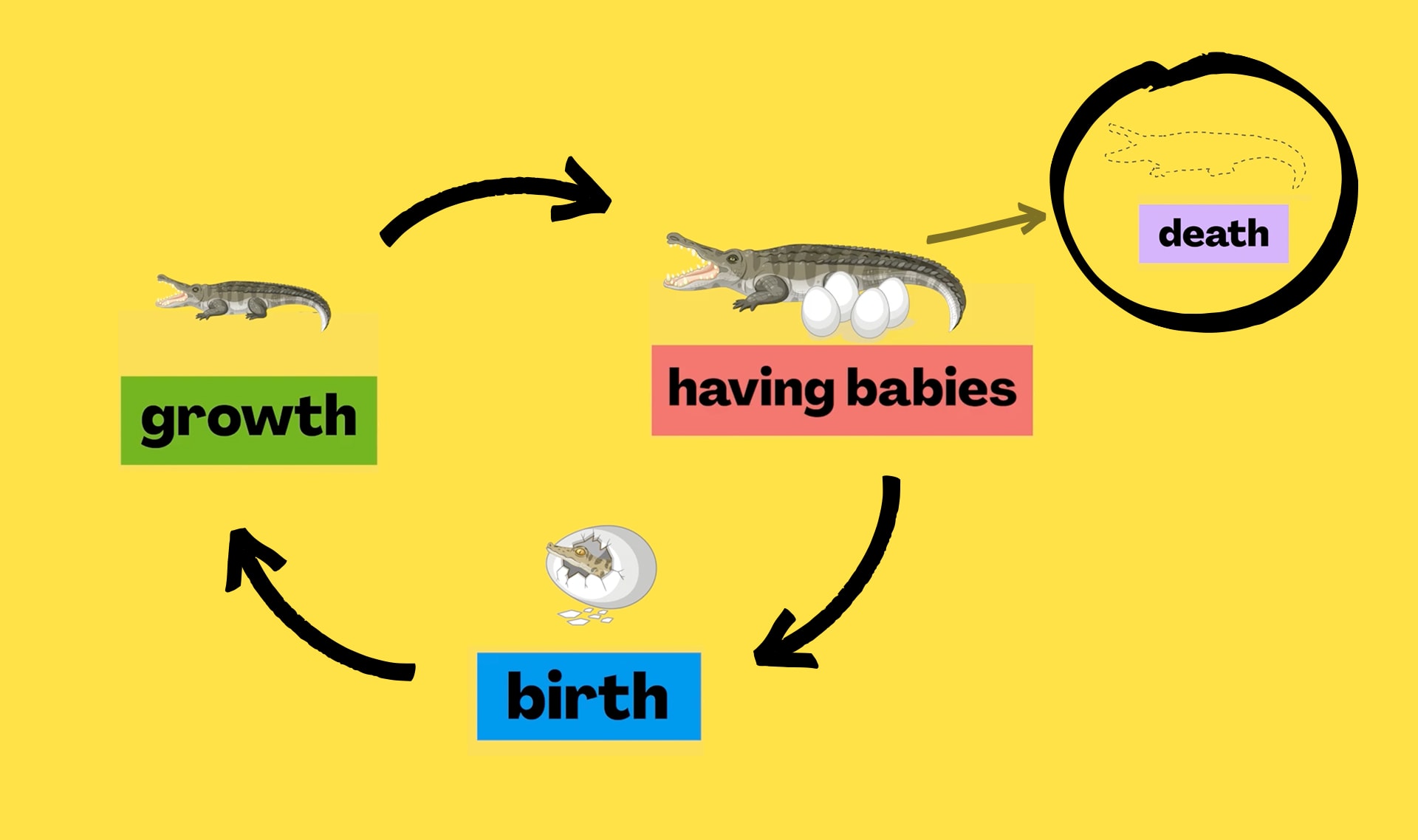
life cycle
6 of 13
the stages of life, including birth, growth, reproduction, and death
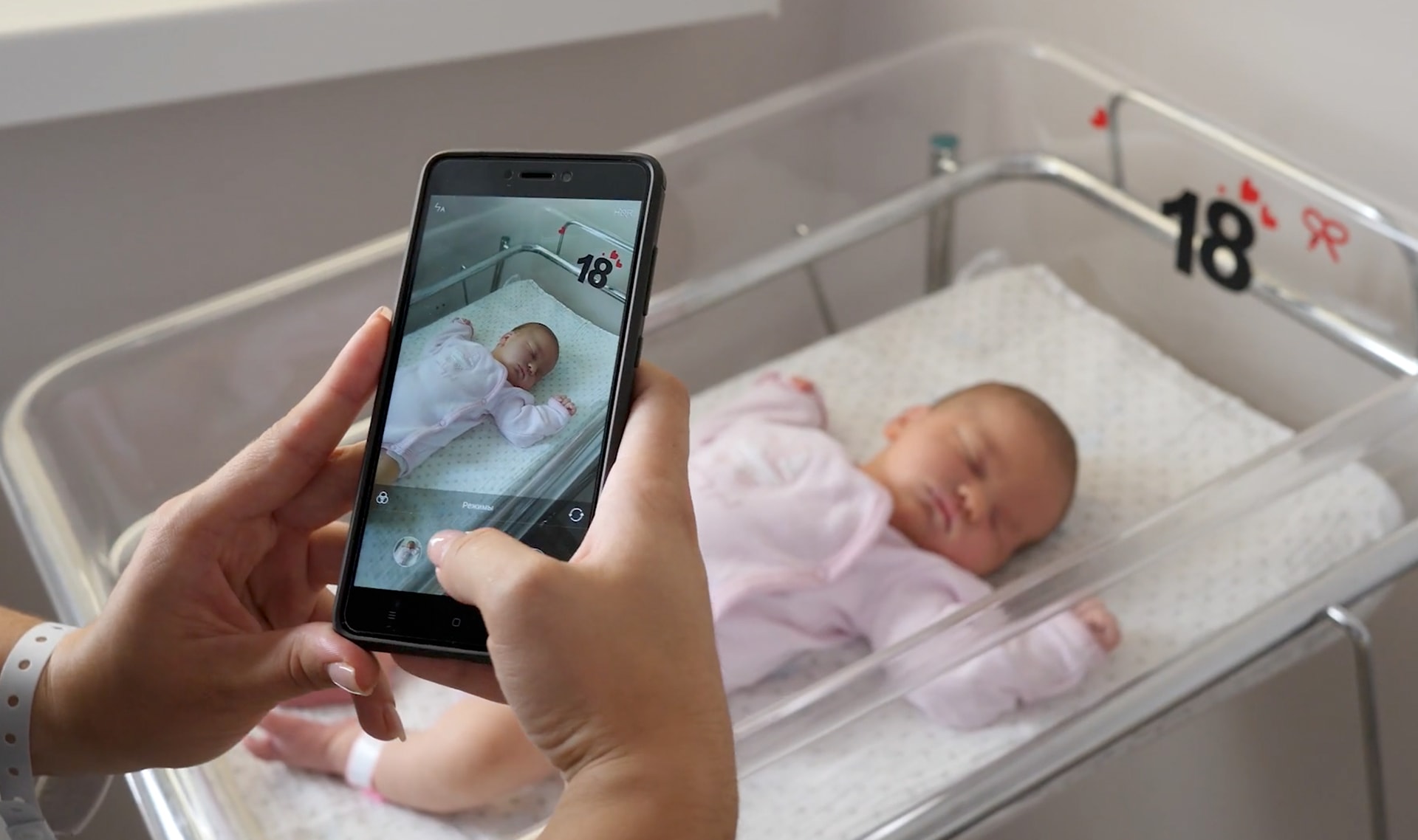
birth
7 of 13
a stage in the life cycle of every living thing that is the beginning of its life
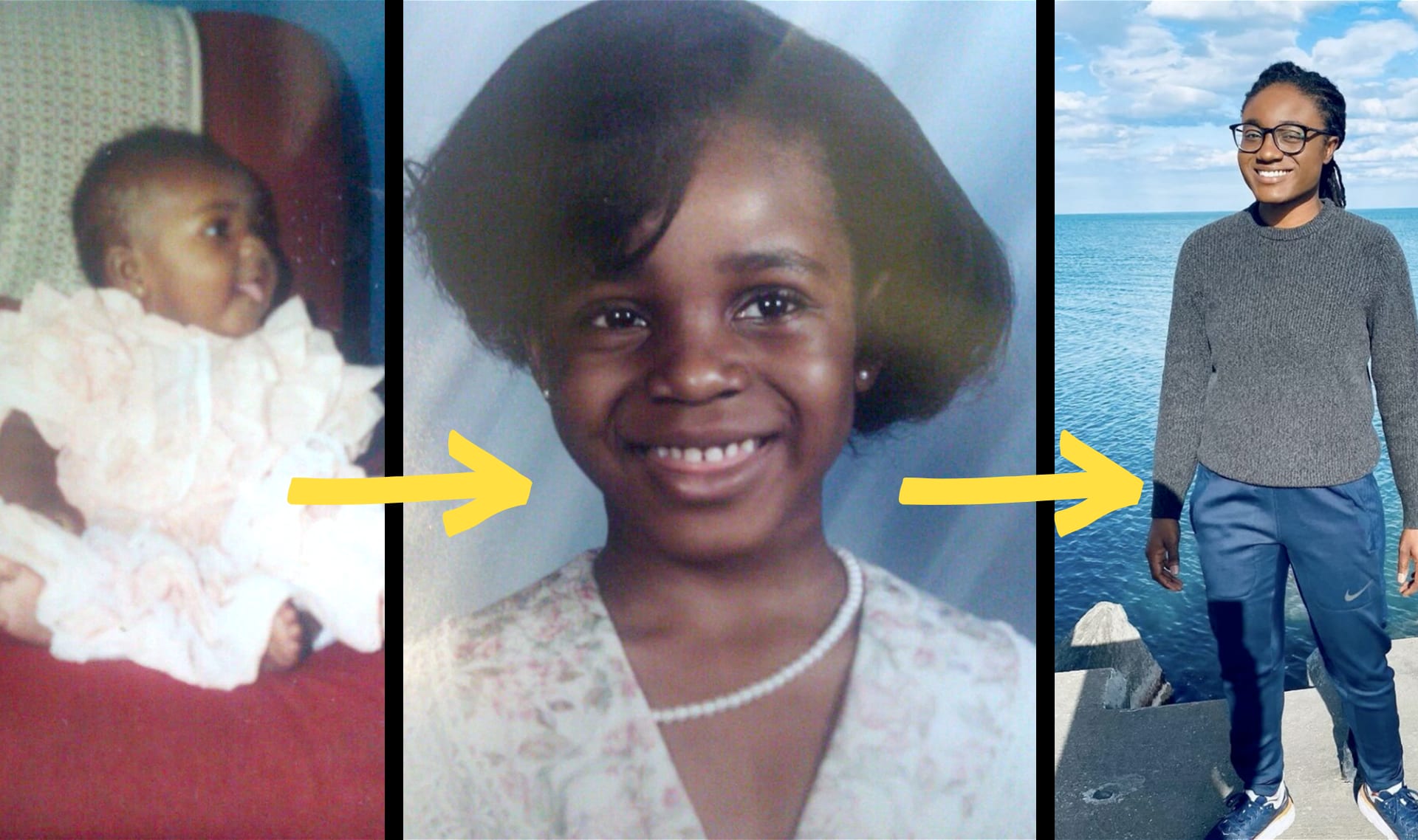
growth
8 of 13
a stage in the life cycle of every living thing when a baby grows to an adult
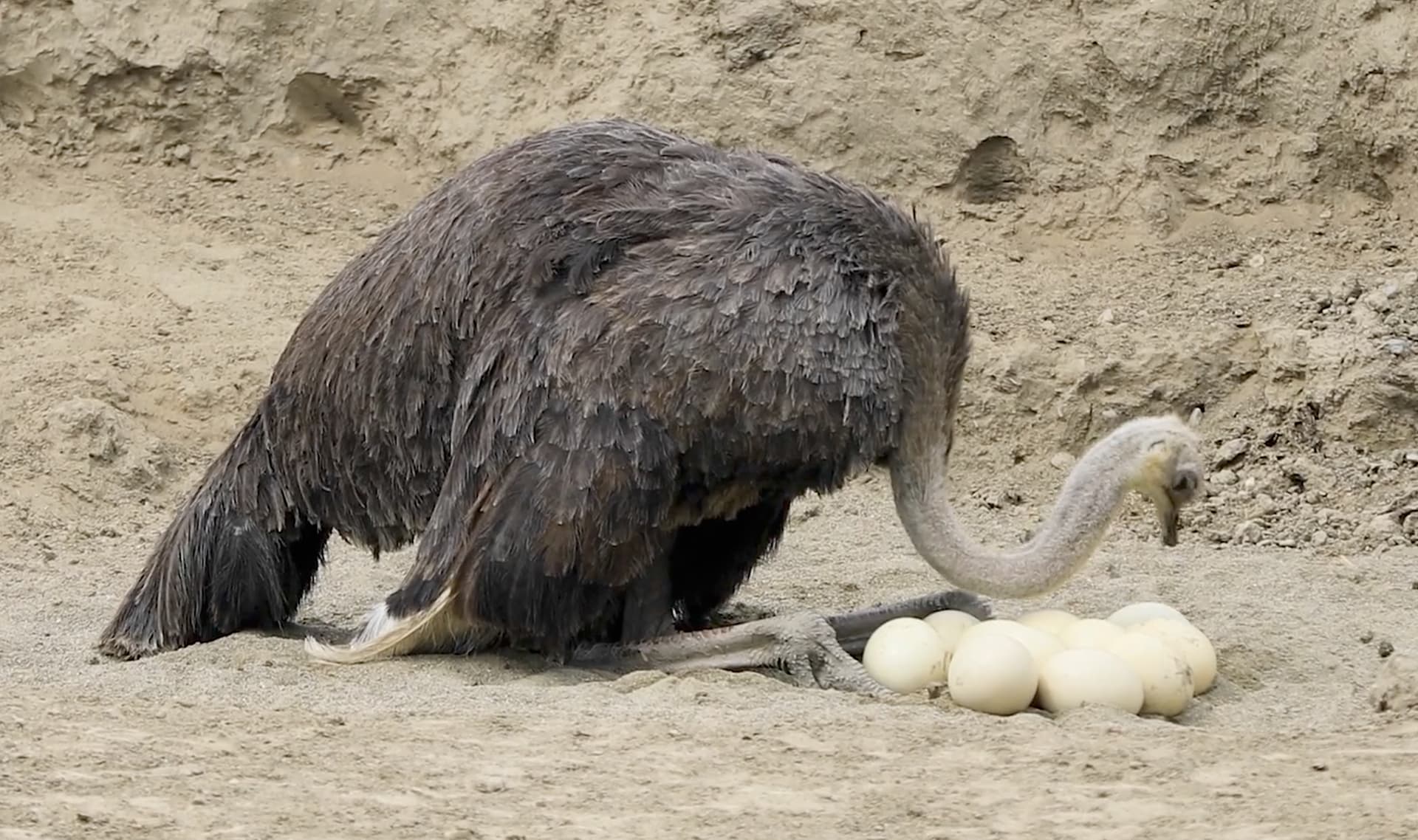
reproduction
9 of 13
a stage in the life cycle of living things when they have offspring
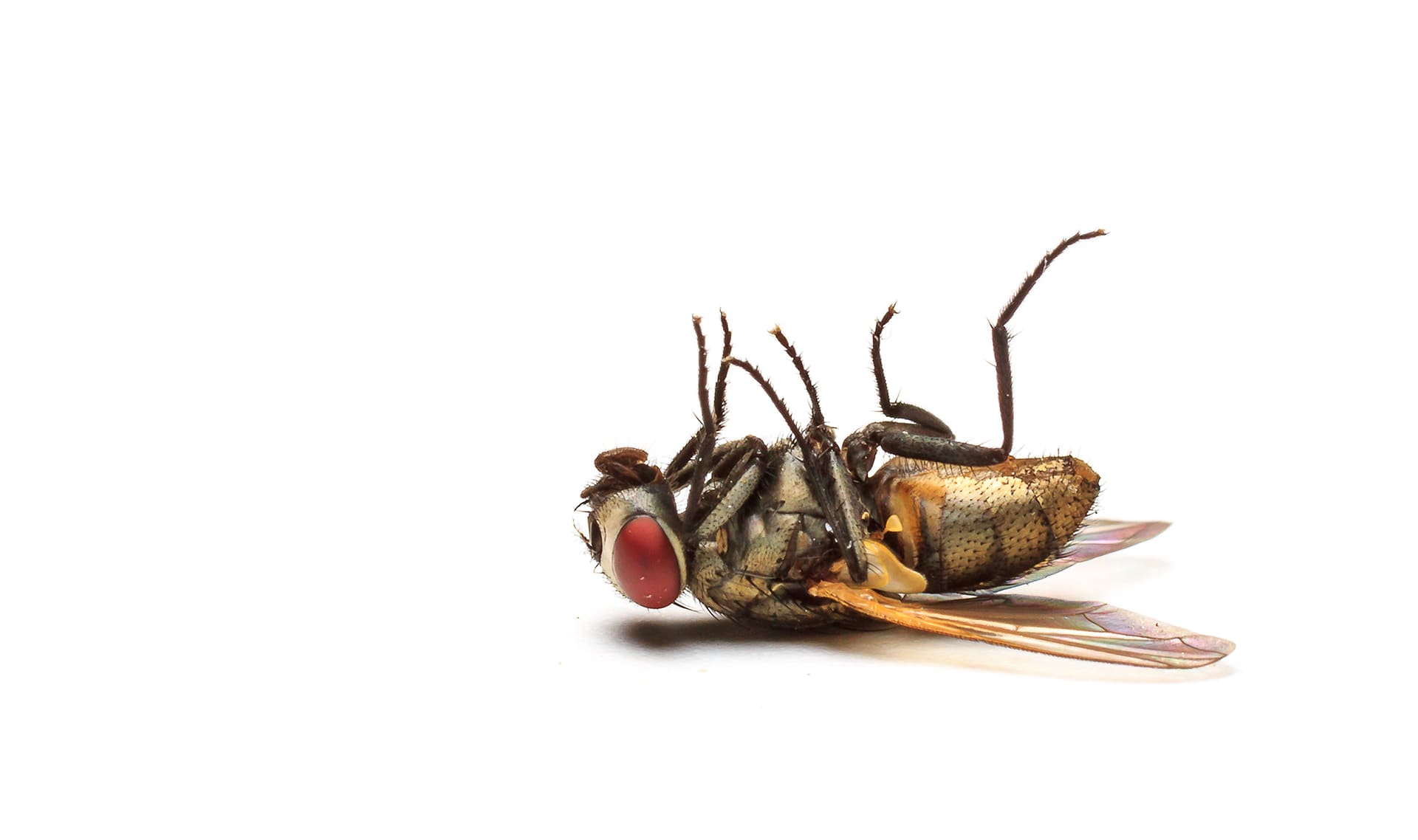
death
10 of 13
a stage in the life cycle of every living thing that marks the end of its life
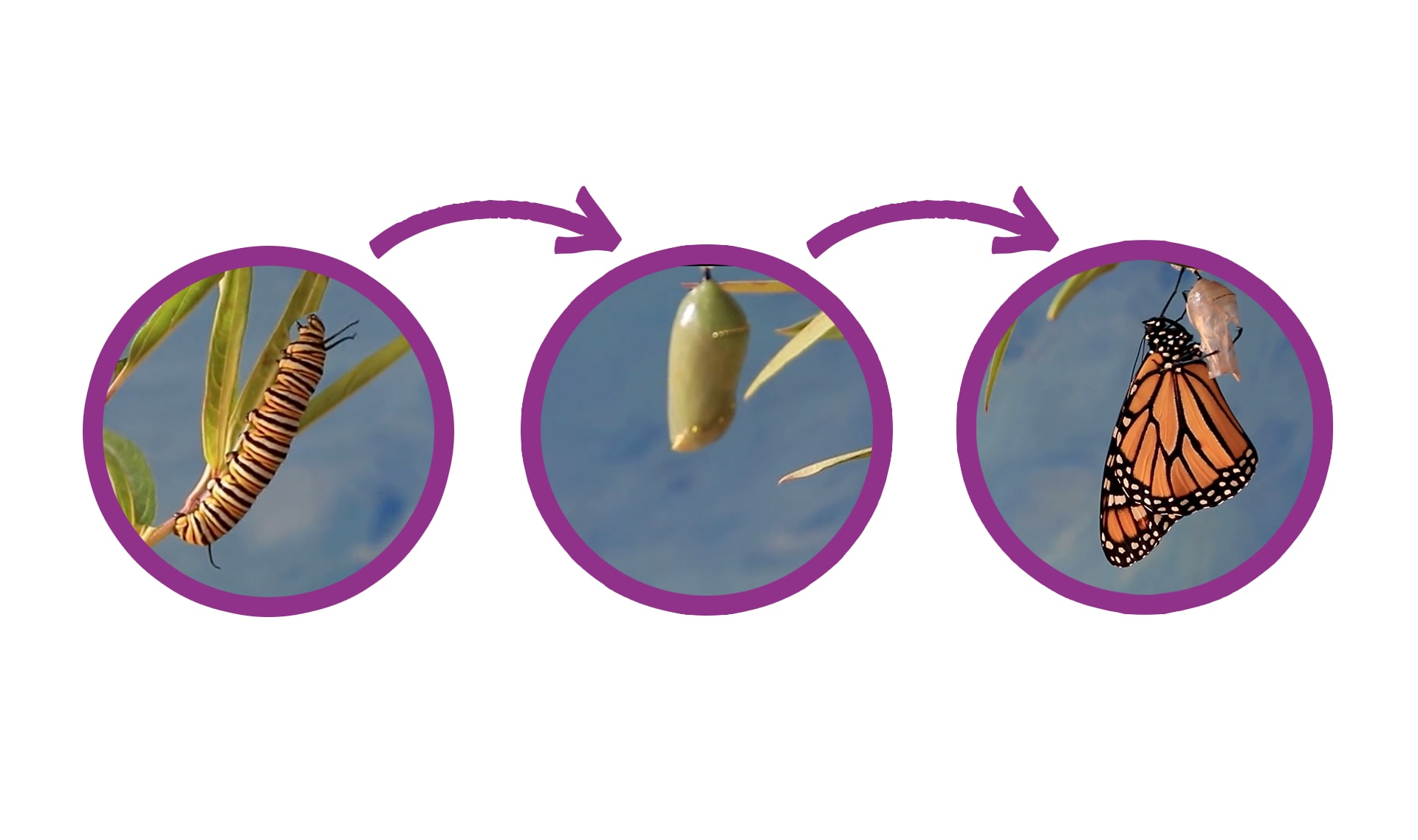
metamorphosis
11 of 13
a process where an animal's body transforms dramatically, such as a caterpillar turning into a butterfly
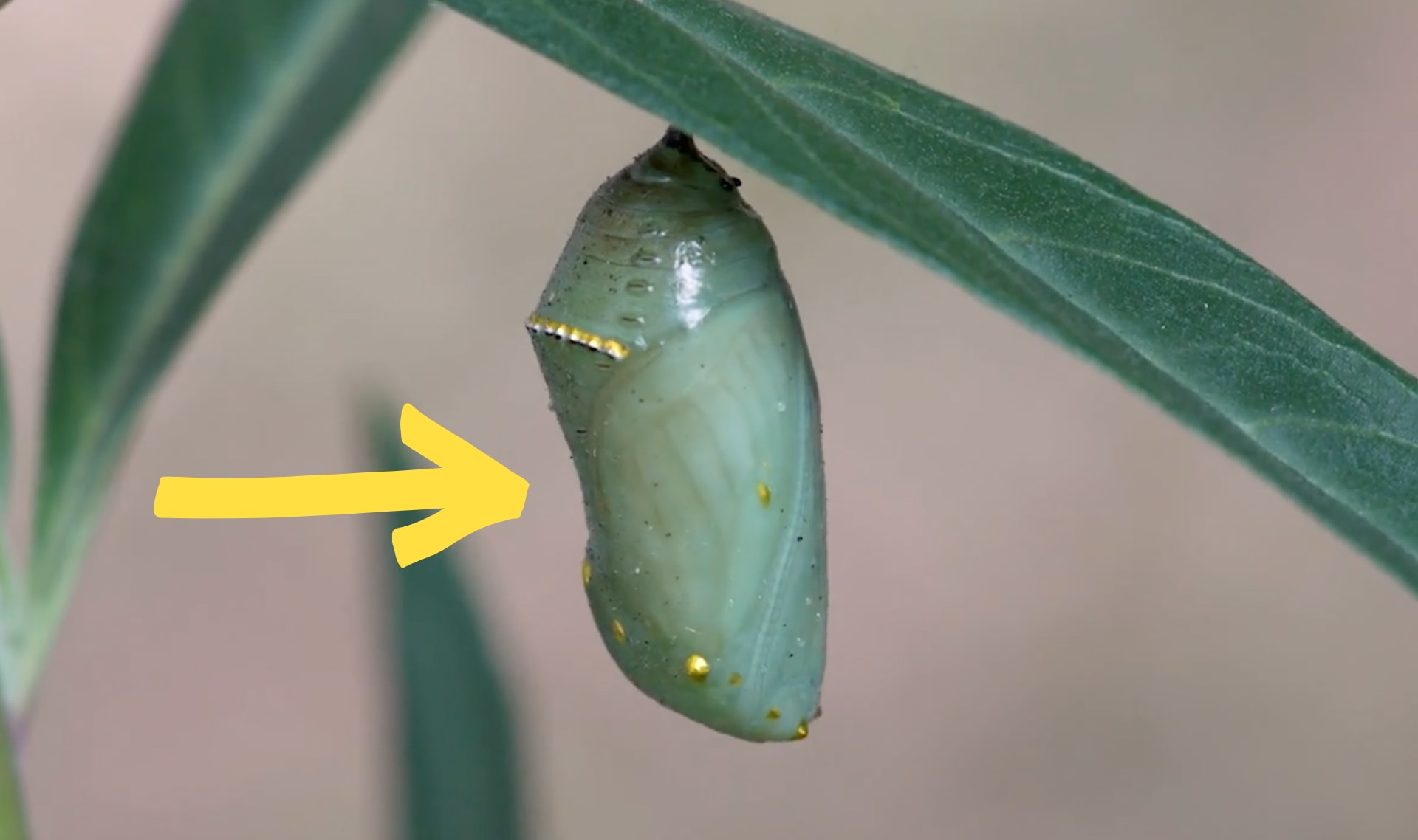
chrysalis
12 of 13
a stage of the life cycle between larva and adult, specifically for butterflies

swamp
13 of 13
a habitat covered in water and filled with many trees
🎉
That’s it for this lesson! How did it go?
Extend this lesson
Sign up now for more great lessons!


